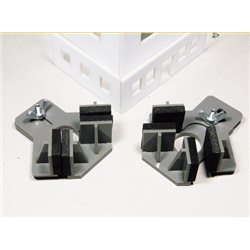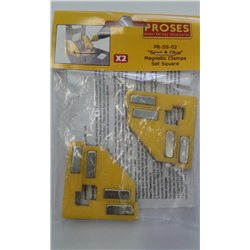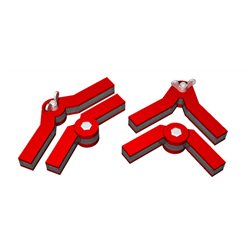When it comes to hobby knives, the expensive part of the knife is often the bits surrounding the blade and not the...
No products
Product successfully added to your shopping cart
There are 0 items in your cart. There is 1 item in your cart.
Search Tips
Christmas and New Year
We are dispatching orders every weekday apart from Christmas Day, Boxing Day and New Year's Day.
If you order is time critical, select next day delivery at checkout.
The shop in Sandown is closed from 25th December, reopening on 30th December.
What tools are especially useful at holding model assemblies together whilst adhesives set?
Several tools are especially useful for holding model assemblies together while adhesives set:
Clamps: Clamps are versatile tools for applying even pressure and holding parts securely together during adhesive curing. They come in various sizes and styles, including spring clamps, bar clamps, or mini clamps, and can be adjusted to accommodate different assembly sizes.
Rubber bands: Rubber bands can be used to hold parts together by wrapping them tightly around the assembly. They are particularly useful for holding small or irregularly shaped components where clamps may not be suitable.
Modelling Masking Tape: Small sections of modelling masking tape can also be especially useful for holding assemblies together. They are specifically designed for modellers which makes them especially versatile. As they use low-tack adhesives they will not damage the underlying paint or varnish of a model or leave tacky residues.
Clothespins or Clothes pegs: Clothespins, or miniature spring clips, are handy for gripping and holding small parts in place during adhesive curing. They provide moderate pressure and are especially useful for delicate or intricate assemblies.
Magnetic holders: Magnetic holders or magnetic clamps are effective for holding metal parts together while adhesives set. They utilize strong magnets to securely hold the components in place, allowing for hands-free operation.
Jigs and fixtures: Jigs and fixtures are custom-made tools or devices that assist in holding parts in specific orientations or alignments during assembly. They can be used for complex assemblies or when precise positioning is required.
Weighted objects: In certain cases, placing weighted objects on top of an assembly can provide sufficient pressure for adhesive bonding. This method is often used for larger or flat surfaces where clamps may not be practical.
Remember to consider the specific requirements of your model assembly when choosing the appropriate tool. Some adhesives may have specific instructions or limitations regarding the pressure or force applied during the curing process. Follow the manufacturer's recommendations and exercise caution to avoid damaging delicate parts or causing misalignment.
Click here to receive the tips weekly in your mailbox. You can unsubscribe at any time.










